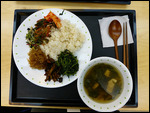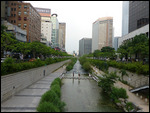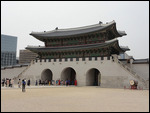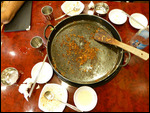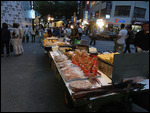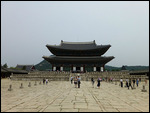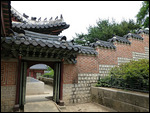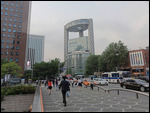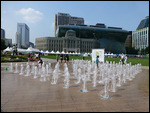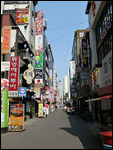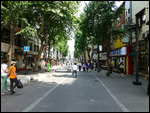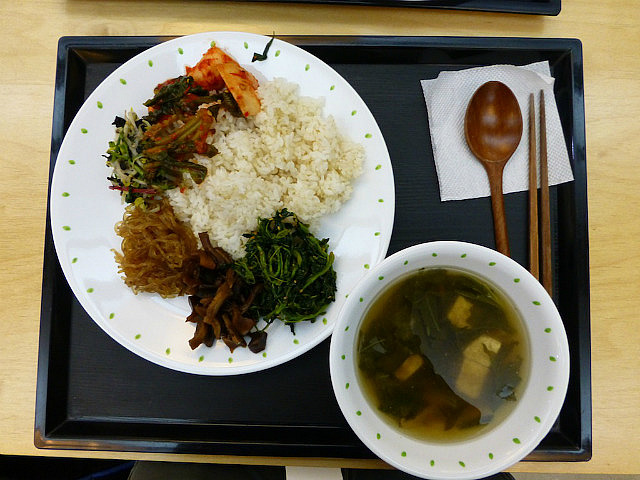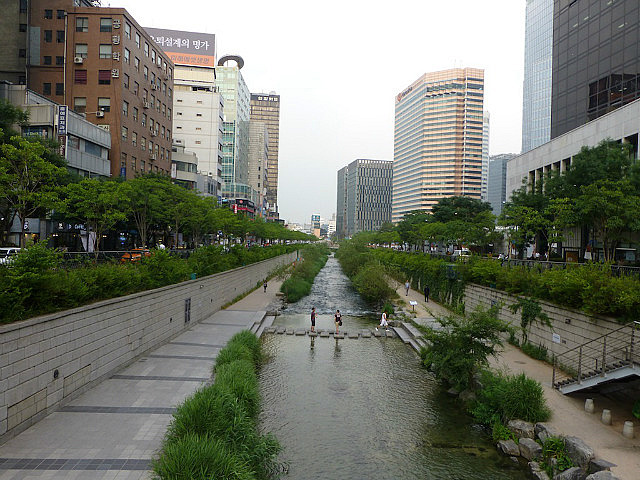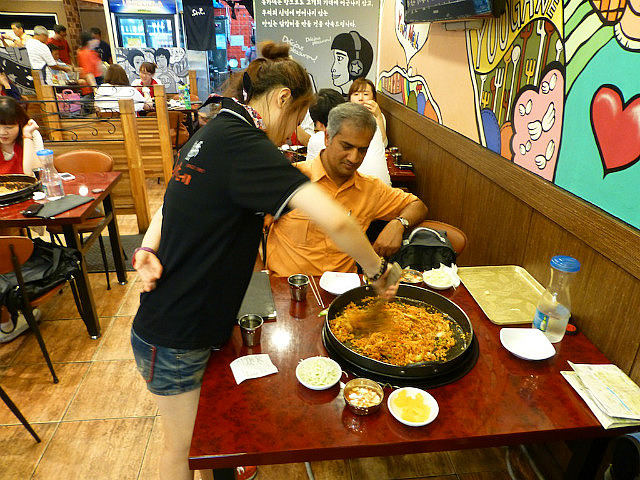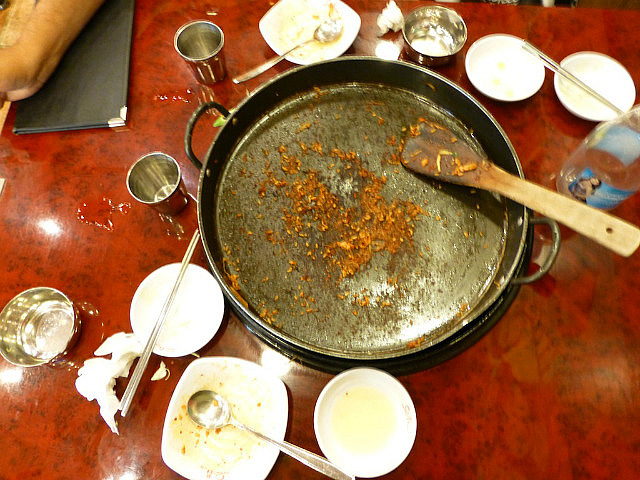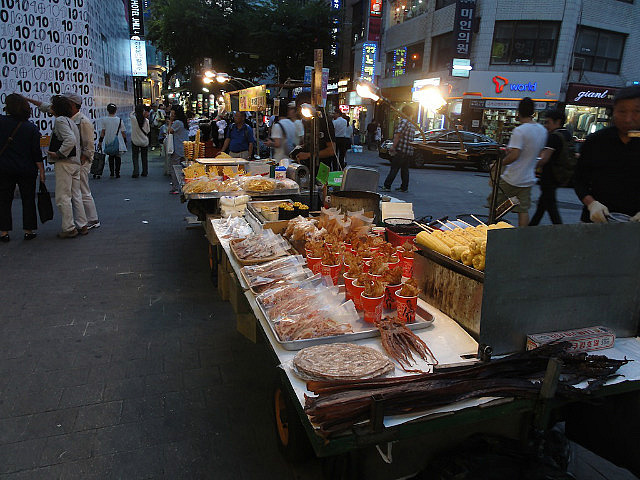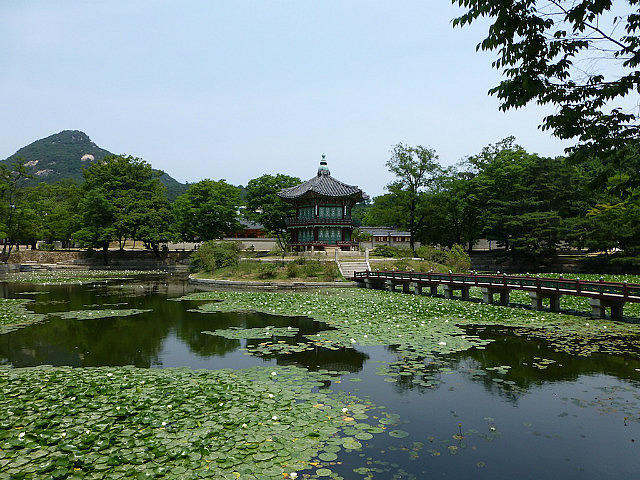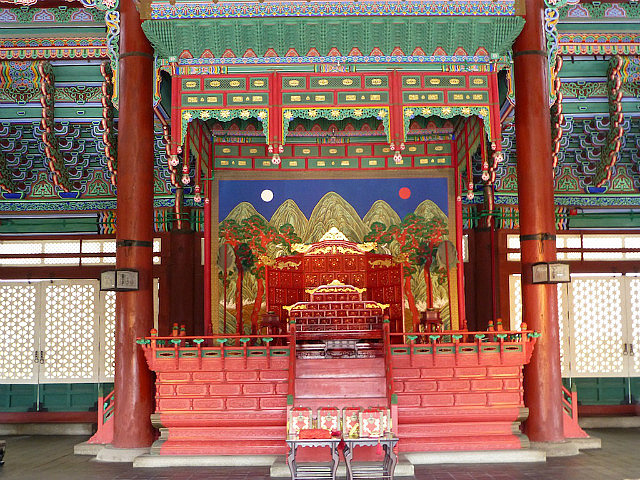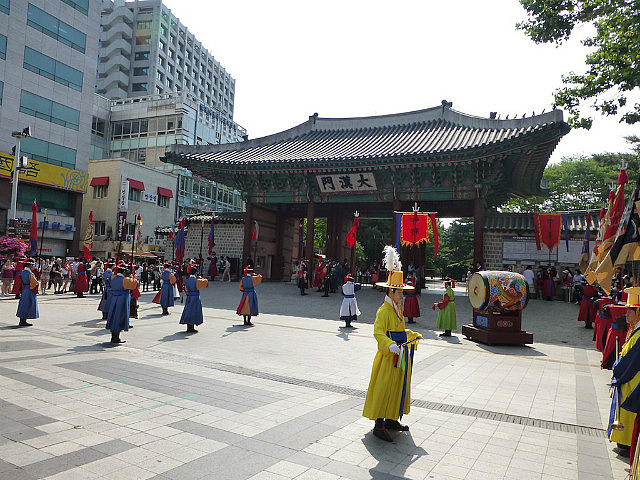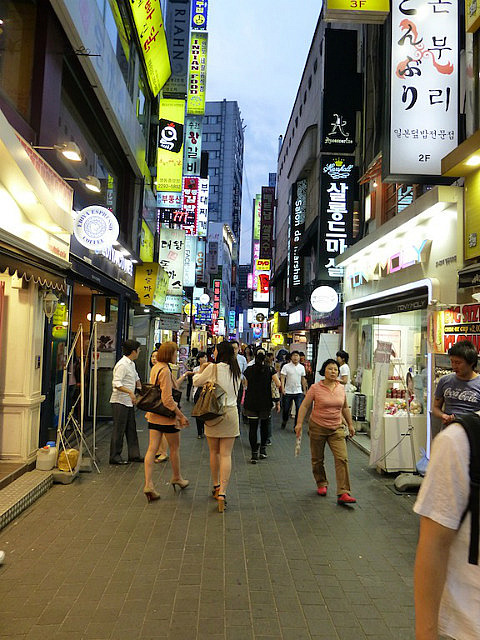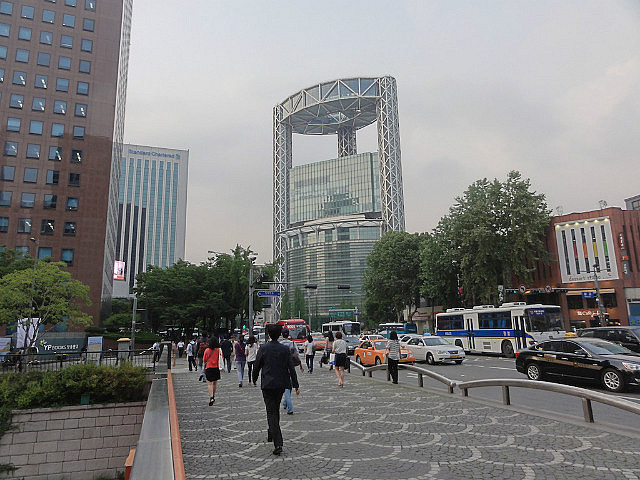On the ferry crossing from Hakata, we tried to memorize a few key phrases in Korean, but after only a few minutes of trying to repeat "Where can I find …" , "How do you get to …" in Korean, the task seemed too formidable. The were few mental pegs to hang the totally alien sounding combinations of vowels and consonants on to. We were getting nowhere and soon gave up. So other than making a few quick notes on a piece of paper for some key words, we were not much prepared for effective communication. But sometimes you don't really need the words.
The very night we arrived in Seoul, after exploring some of the Gwanghwamun area (city center) we headed toward the main street of Insadong neighborhood. Prior research indicated that there were some good eateries around there. An old copy of LP listed a restaurant called SoSim saying it was vegetarian friendly, so we decided to try and find it. We did not see it at the described location, but noticed a handicrafts store with the proprietress sitting outside watching over the store. When see threw a questioning glance towards us, we responded with a questioning "SoSim" ? at her. We understood from her words and expression that the restaurant was no longer in business. Before we walked away to try and find something else, we added that we were vegetarian and were looking for a vegetarian restaurant. Her demeanor suddenly changed, it was as if she immediately understood our dilemma. She grabbed her purse, quickly instructed someone in the store to take charge and and strode out into the street directing us to follow her. She kept going for a couple of blocks and crossed a large intersection all the while not saying anything to us or bothering to explain where she was taking us. But as soon as she entered a building, we knew. She had personally escorted us, two total strangers, to a Buddhist Temple kitchen, where they serve only vegetarian fare! She walked in as if she owned the place and spoke to the people at the counter as if she was leaving us in their care. We had an excellent dinner - Sanche Bibimbop, rice accompanied by several side dishes including mountain vegetables, greens and kimchi (pickled radish). Delicious!
We were the happy recipients of other such instances of kindness, like a Seoul metro official who waved us through the turnstile when he realized that we had entered the wrong side platform (and would have had to pay again to get to the right platform), and others who were happy to point us in the right direction if we appeared clueless.
Seoul is vibrant city with a metro network consisting of several criss-crossing lines and it is possible to cover most of the city by hopping on different lines. Koreans are among the most wired people anywhere, wifi is available extensively and folks everywhere are constantly peering into and texting from their Samsung smartphones.
We explored the streets of the downtown area both overland and along the Cheonggye Stream (canal) the banks of which have been beautified and neatly converted in to a walking path where Seoul'ites seem to congregate in the evening sitting by the water. Seoul Plaza was another nice place to stroll around and do some people watching.
On our full day in Seoul, we visited Gyeongbokgung Palace, the oldest and most impressive of Seoul's 5 major palaces and a relic of the long-lived Joseon dynasty. It closely resembles the the Forbidden City in Beijing, complete with numerous gates, courtyards, halls and buildings. We had an excellent 70 minute tour in English conducted by a very scholarly woman dressed in elegant Korean traditional dress and umbrella who spoke impeccable English and was able to bring Korean history to life. This was the country’s principal royal residence and the Joseon kings ruled with a lot of pomp and ceremony. Evidently at one time the palace costs accounted for 10% of government expenditure. She also described how much of this legacy was destroyed during the 1592 war with Japan when the Japanese warlord Hideyoshi laid waste to the Korean peninsula.
Interestingly, according to the guidebook, it was not the Japanese that razed the place. It was the citizens of Seoul that did the dirty deed. As the Japanese marched across the country, the king and the aristocrats abandoned Seoul to save their skin. Angered by the desertion, a mob burned down the palace. It lay in waste for 300 years before it was rebuilt and reoccupied 1865. Much of the palace was destroyed again in 1895 when Korea was caught in the crossfire of Japan's war and eventual invasion of China. The palace is still being reconstructed in parts to restore it to its former state from its glory days.
After touring the palace and briefly peeking into the National Folk History Museum, we explored the Insadong area, a premier tourist district which is renowned for its galleries and traditional crafts stores. While there are plenty of galleries and restaurants, it was also a street market selling cheap clothes and knick-knacks, a la Linking Road in Bombay. One fun and colorful event that we stumbled upon while just walking around the city was the elaborate Changing of the Guard ceremony in front of Deoksugung Palace. While touristy, it made for some excellent photographs!
At sundown, we strolled through Myeongdong, a hip shopping area largely frequented by fashionably dressed youngsters who are there both to see and be seen. We were scouting dinner options and after several false starts (where the picture of a dish on display looked promising but further investigation revealed that it was 'unsuitable') , our noses led us to one that looked very interesting. All the tables contained a built in stove and a wok was placed at the center. Your requested order was cooked/ assembled right at your table. This was promising since you could see and control what went into the dish.
With the aid of the notes previously made, we communicated that we would like a 'vegetarian' version of their chicken fried rice (bokkeumbap), and sat back to enjoy the "cooking". An assortment of vegetables, cooked rice and a huge dollop of red chilli-pepper paste went into the wok and different members of the wait staff stopped by a few times to give it a quick stir and ensure it was cooked through. What resulted was one of the most enjoyable meals on this trip thus far. We present the before and after pictures as evidence!
